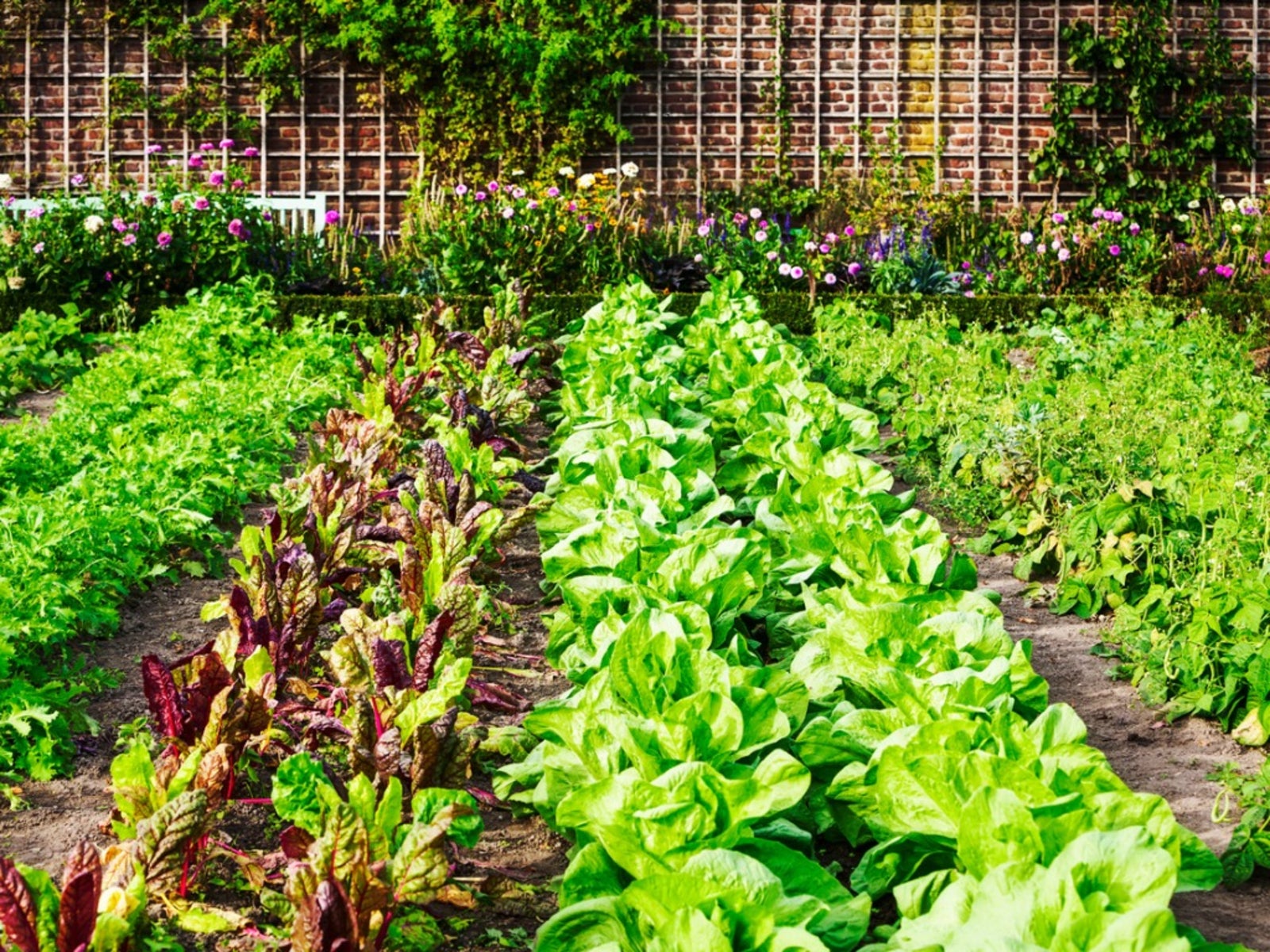Crop Arrangement In Gardens: What Is The Best Way To Orient Garden Rows

Proper vegetable garden orientation will assure that your plants are positioned in the best way to achieve optimal growth and performance. Crop arrangement in gardens is not a new practice and is one that deserves some attention if you are looking for maximum yield from your plants.
The direction that vegetables are planted is most important in areas where maximum sunlight is desired and not so influential in areas where the summers are exceptionally hot.
How Should Garden Rows be Oriented?
Generally speaking, in the north tall plants such as beans, peas, and corn do best on the north side of the garden. Medium size crops such as tomatoes, cabbage, squash, pumpkins, and broccoli in the center of the garden. Short-growing plants such as lettuce, radishes, beets, and onions will do best in the southernmost part of the garden.
Most experts believe that the best way to orient garden rows in the Northern hemisphere is north to south. This gives the most sun exposure and allows for ample air circulation.
When crops are planted east to west, the rows tend to shade each other. If you are planting on a steep slope, however, it's best to keep rows perpendicular to the slope, so that your plants and soil do not end up at the bottom of your hill.
When Shade is Necessary for Crop Arrangement in Gardens
In many places where the summers get acutely hot, some shade is necessary, and the direction of vegetable garden rows is not extremely relevant. A shade cloth is often used in some of the warmer regions of the country to keep the hot summer sun from destroying crops.
Gardening tips, videos, info and more delivered right to your inbox!
Sign up for the Gardening Know How newsletter today and receive a free copy of our e-book "How to Grow Delicious Tomatoes".
-
 Looking For Plants To Give You The Soft And Fuzzies? Try These 5 Fuzzy Leaf Plant Options
Looking For Plants To Give You The Soft And Fuzzies? Try These 5 Fuzzy Leaf Plant OptionsLovers of texture, drama, silver foliage and tactile plants will adore these special sensory garden additions. These fuzzy leaf plant options will leave you all aglow
By Susan Albert
-
 Get Ready For A Summer Of Hummers! Grow These Full Sun Hummingbird Plants and Flowers
Get Ready For A Summer Of Hummers! Grow These Full Sun Hummingbird Plants and FlowersIf you’re lucky enough to enjoy a sunny backyard, make sure you are maxing out on your pollinator opportunities and grow these full sun hummingbird plants and flowers
By Tonya Barnett
-
 How Many Vegetables To Plant Per Person For A Year
How Many Vegetables To Plant Per Person For A YearGauging how much to plant in a vegetable garden can eliminate waste while still producing enough for your family. Click for more.
By Bonnie L. Grant
-
 13 Perennial Fruits And Vegetables You Only Have To Plant Once
13 Perennial Fruits And Vegetables You Only Have To Plant OnceLooking to set it and forget it? Find out which fruits and vegetables can be grown as perennials.
By Laura Miller
-
 11 Edible Plants For A Year-Round Garden In A Bucket
11 Edible Plants For A Year-Round Garden In A BucketWant to know how to grow food inside your house and which foods do best indoors? Click here to learn all about it.
By Bonnie L. Grant
-
 Frost Tolerance Of Vegetables From Least To Most Hardy
Frost Tolerance Of Vegetables From Least To Most HardyHow cold can vegetables tolerate? Knowing which veggies will survive frosts and freezes is essential for the success of your garden. Click here for more.
By Laura Miller
-
 Best Vegetables To Pickle Straight From The Garden
Best Vegetables To Pickle Straight From The GardenPickles aren’t limited to just cucumbers. Read on for tips on pickling your fresh veggies.
By Amy Grant
-
 Benefits Of Planting In Fall Vs. Spring Vegetable Plots
Benefits Of Planting In Fall Vs. Spring Vegetable PlotsLearn why some vegetables do better if you plant them in fall instead of spring.
By Laura Miller
-
 Interplanting Vegetables In The Fall Garden
Interplanting Vegetables In The Fall GardenLearn all about the benefits of interplanting vegetables for your fall garden.
By Laura Miller
-
 Best Vegetables For Growing In Perlite
Best Vegetables For Growing In PerlitePerlite is a natural growing medium that comes from super-heated volcanic glass. In some cases, it works better than soil. Read on for more info.
By Laura Miller